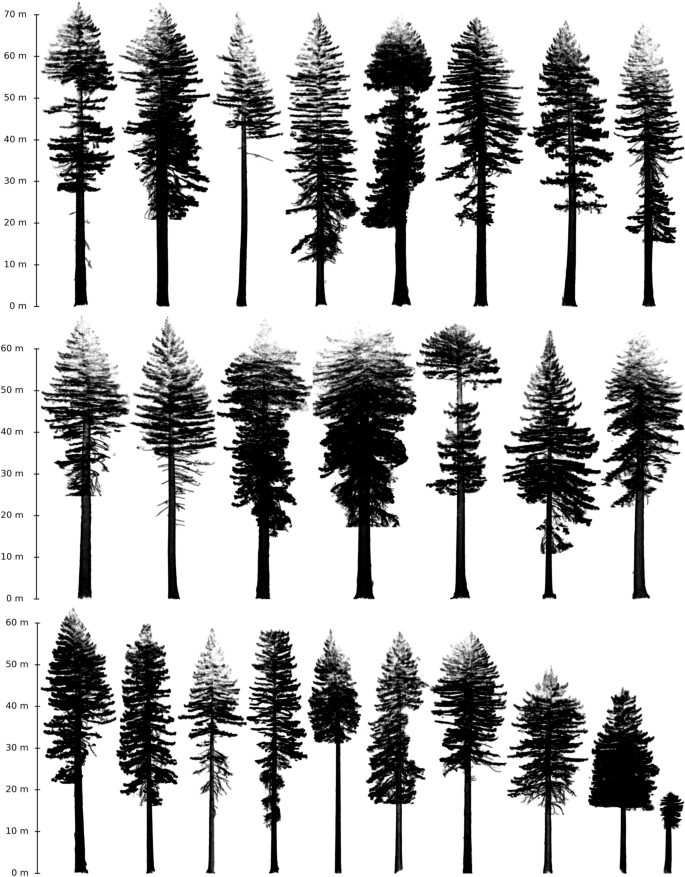Having been back in the field again at Wytham late last year (those were the days eh?), despite the odd covid-related hiccup (we're all getting sick of those, right :-/) it's always good to see work coming out in various papers. This is particularly true at the moment when it's easy to lose sight of the sunny uplands ahead.
So I'm really thankful (& lucky!) to have some great colleagues & collaborators who are taking our work forward. We had a paper in Nov 2020 in Scientific Reports describing our redwood work, with Laura Duncanson, John Armston, Andy, Phil and myself. We show that the allometric models seem to underestimate redwood biomass significantly, while the TLS agrees really closely with the amazing crown mapping work of Steve Sillett. That paper got quite a bit of press, not least for Phil's beautiful image of the redwood 'usual suspects' lineup.
 |
| From Disney et al. (2020) https://doi.org/10.1038/s41598-020-73733-6 |
One of the best things about this, was the Laura's picture appeared in the Times, and our work was immortalised in comic form by the amazing Naomi Volain. That's a win! It was also covered in the Jan 2021 issue of Scientific American, a piece by Katherine Kornei.
Our long-term collaboration with Kim Calders and the Ghent CAVElab team resulted in Kim's horizon scan view of TLS in ecology, which was a great outcome of the meeting in Ghent in 2018, and summarises a whole range of work from TLS groups worldwide. It also includes another one of Phil's cool images, this time of our local Hardy Tree in Old Pancras churchyard.
 |
| From Calders et al. (2020) RSE. |
 |
| From Burt et al. (2021) Royal Soc. Open Science. |
Onwards and upwards, and here's to more trees in 2021.